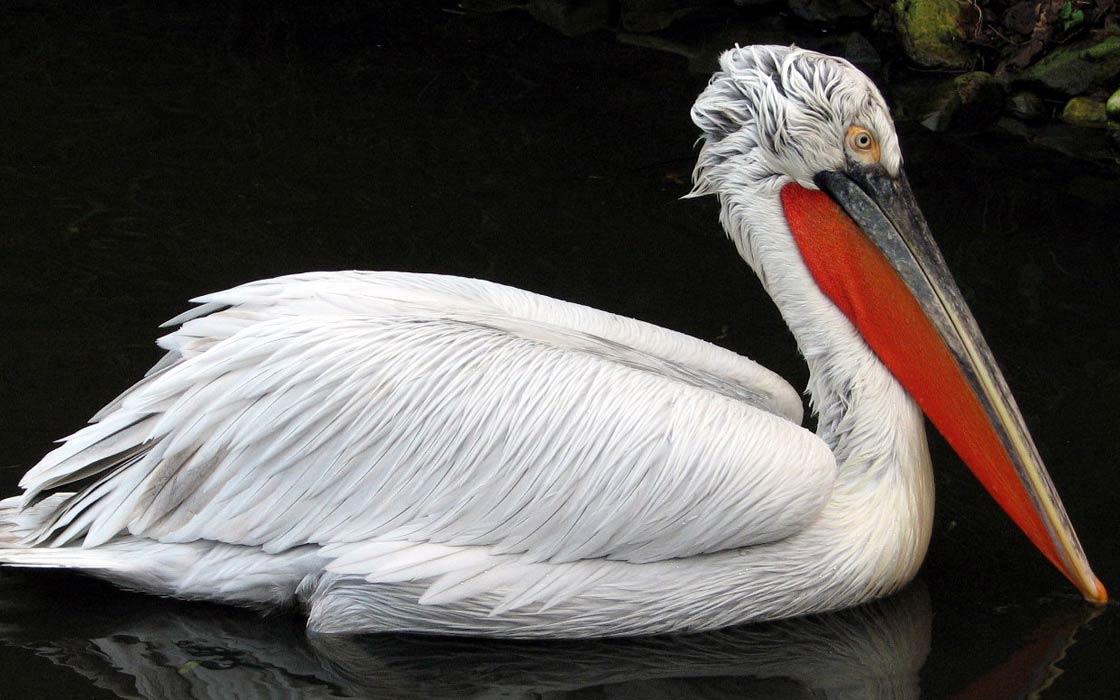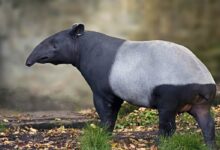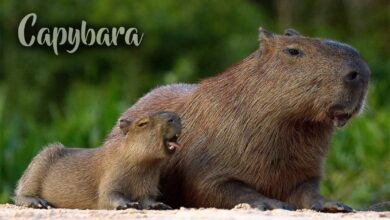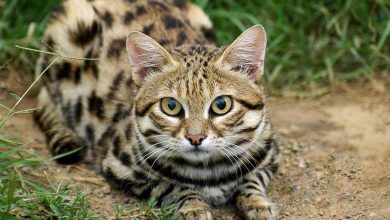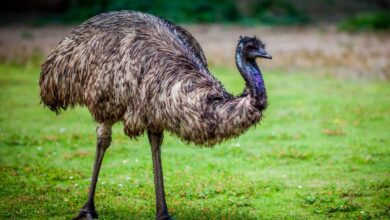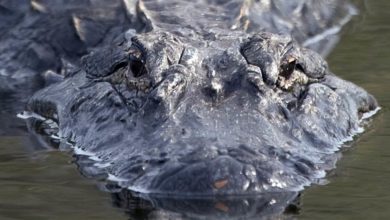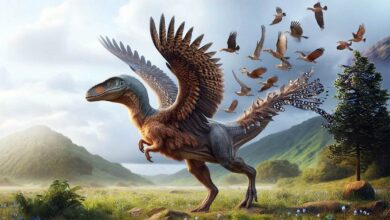Discover the Majestic Dalmatian Pelican
The Dalmatian pelican (Pelecanus crispus) is a large waterbird with a distinctive appearance. It is the largest member of the pelican family, with a wingspan of up to 351 cm (11 ft 6 in) and a body length of up to 183 cm (6 feet). The Dalmatian pelican is named for the distinctive white spots on its wings, which are most prominent during the breeding season. Dalmatian pelican is found in parts of Europe, Asia, and Africa, typically near large bodies of freshwater such as lakes, marshes, and rivers. It feeds on a variety of aquatic prey, including fish, crustaceans, and amphibians. The pelican uses its large bill and pouch to scoop up prey and store it for later consumption.
The Dalmatian pelican is a social species and often feeds and roosts in large groups. During the breeding season, it nests in colonies on the ground or in trees, often near water. The female lays a clutch of two to three eggs, which are incubated by both parents. Once the chicks hatch, they are fed regurgitated food by the adults.
The Dalmatian pelican is a striking and impressive species that is well-known for its size and distinctive appearance.
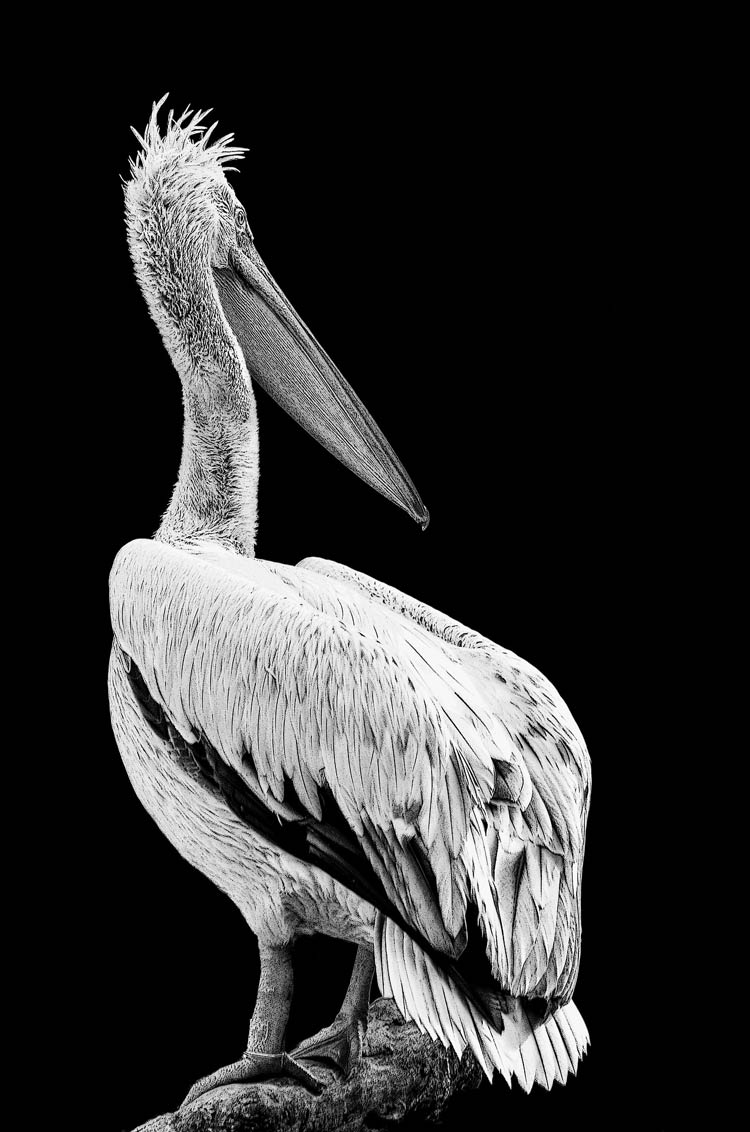
Basic facts about Dalmatian pelican
The Dalmatian pelican is a large waterbird with a distinctive appearance. Some of its key characteristics include:
- Size
The Dalmatian pelican is the largest member of the pelican family, with a wingspan of up to 183 cm (6 ft) in length. - Plumage
The Dalmatian pelican has white and grey plumage, with a distinctive white head and neck and a pale grey body. During the breeding season, the pelican has white spots on its wings, which give it its common name. - Bill and pouch
The Dalmatian pelican has a large, triangular bill with a distinctive downward curve at the end. It also has a large, expandable pouch under its bill that it uses to scoop up and store prey. - Habitat
The Dalmatian pelican is found in parts of Europe, Asia, and Africa, typically near large bodies of freshwater such as lakes, marshes, and rivers. - Diet
The Dalmatian pelican feeds on a variety of aquatic prey, including fish, crustaceans, and amphibians. It uses its large bill and pouch to scoop up prey and store it for later consumption. - Behavior
The Dalmatian pelican is a social species and often feeds and roosts in large groups. During the breeding season, it nests in colonies on the ground or in trees, often near water. The female lays a clutch of two to three eggs, which are incubated by both parents. Once the chicks hatch, they are fed regurgitated food by the adults.
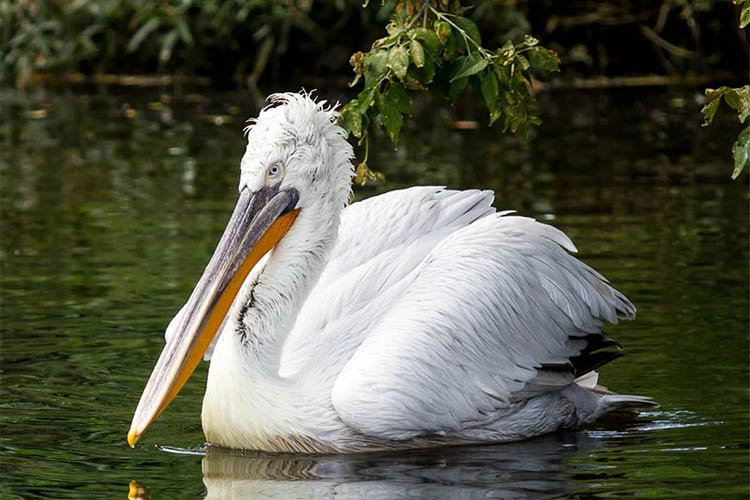
Distribution and habitat
The Dalmatian pelican (Pelecanus crispus) is found in parts of Europe, Asia, and Africa. It is a widespread species, with a range that extends from Eastern Europe and Western Asia, through the Middle East, and into northern and central Africa.
The Dalmatian pelican typically inhabits freshwater habitats such as lakes, marshes, and rivers. It is often found in areas with shallow water and a rich diversity of aquatic life, as this provides an ample food supply. The pelican is also known to occur in brackish or saline wetlands, such as lagoons and estuaries, where it feeds on a variety of prey.
The Dalmatian pelican is a migratory species, and its distribution and habitat use can vary depending on the season. During the non-breeding season, it may be found in more widespread areas, including coastal regions, and may move to different locations in search of food. During the breeding season, the pelican is more sedentary and is typically found in more specific breeding areas.
Overall, the Dalmatian pelican is adapted to living in a variety of freshwater habitats and is able to adapt to different environments in order to find food and suitable breeding sites.
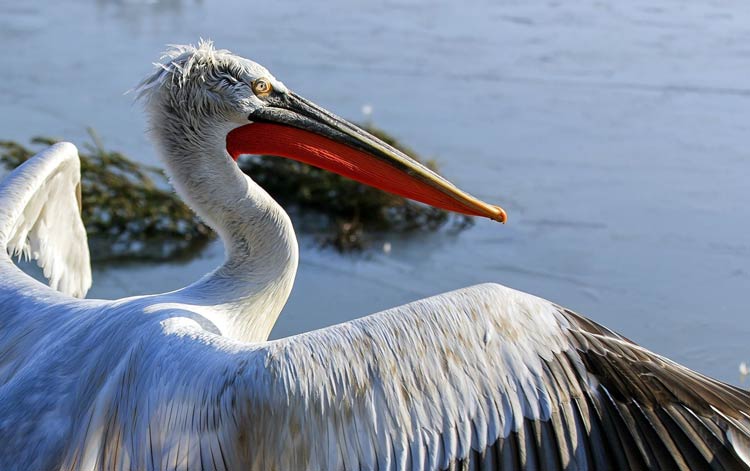
Migrations
The Dalmatian pelican (Pelecanus crispus) is a migratory species, meaning that it moves between different areas in search of food and suitable breeding sites. The specific patterns of migration vary depending on the population and the region in which the pelican is found.
In Europe and Asia, the Dalmatian pelican typically breeds in southeastern and central Europe, as well as in western and central Asia. During the non-breeding season, it may move to different locations in search of food, including coastal areas and more southern regions. Some populations of Dalmatian pelicans in Europe and Asia are also known to undertake long-distance migrations, traveling between breeding and non-breeding areas.
In Africa, the Dalmatian pelican is found in the northern and central parts of the continent, and it is believed to be a non-migratory species in this region. However, some populations may still exhibit limited movements in response to changes in water levels or the availability of food.
Overall, the Dalmatian pelican is a highly adaptable species that is able to migrate and adjust its movements in response to changing environmental conditions.
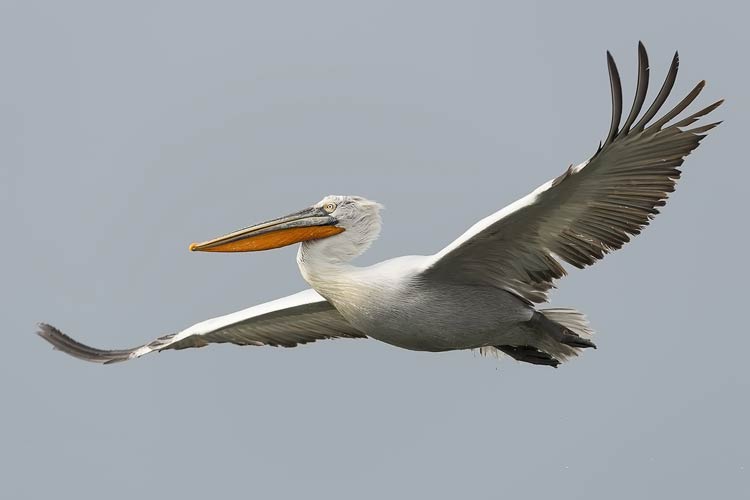
Behavior
The Dalmatian pelican (Pelecanus crispus) is a social species and is often found in large groups, both when feeding and when roosting. The pelican feeds on a variety of aquatic prey, including fish, crustaceans, and amphibians, which it scoops up with its large bill and stores in its expandable pouch. The pelican may feed alone or in groups, depending on the availability of food.
During the breeding season, the Dalmatian pelican nests in colonies, which may consist of several hundred pairs. The pelican nests on the ground or in trees, often near water, and the female lays a clutch of two to three eggs, which are incubated by both parents. Once the chicks hatch, they are fed regurgitated food by the adults.
The Dalmatian pelican is a highly adaptable species and is able to adjust its behavior in response to changing environmental conditions. It is able to migrate and move to different areas in search of food and suitable breeding sites, and it is able to adjust its feeding habits to exploit different prey sources. Overall, the Dalmatian pelican is an impressive and striking species that is well-known for its size and distinctive appearance.
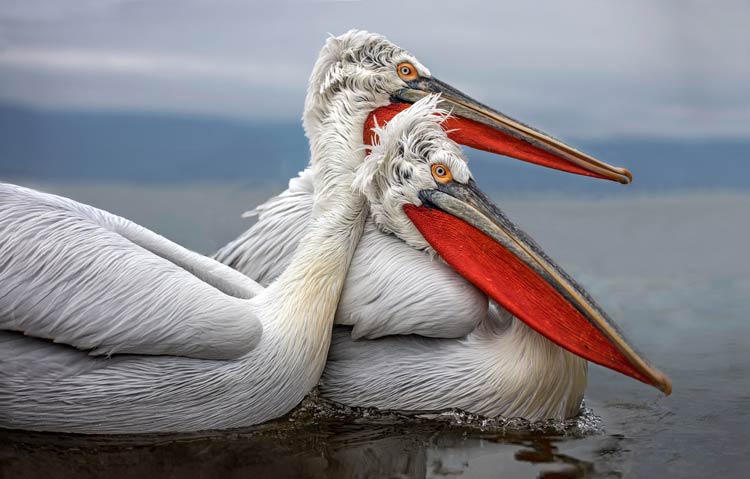
Food
The Dalmatian pelican (Pelecanus crispus) feeds on a variety of aquatic prey, including fish, crustaceans, and amphibians. It uses its large, triangular bill and expandable pouch to scoop up prey and store it for later consumption. The pelican is an opportunistic feeder and is able to exploit a wide range of prey sources, depending on what is available in its environment.
The Dalmatian pelican typically feeds in shallow water, where it is able to spot and capture prey with its keen eyesight. It may also feed by diving into the water, using its bill and pouch to scoop up prey. The pelican is known to feed on a variety of prey species, including small fish, crayfish, snails, and amphibians.
The Dalmatian pelican is a social species and often feeds in large groups, with several birds working together to locate and capture prey. The pelican is able to feed on a variety of prey sources, depending on what is available in its environment, and it is able to adjust its feeding habits in response to changing conditions.
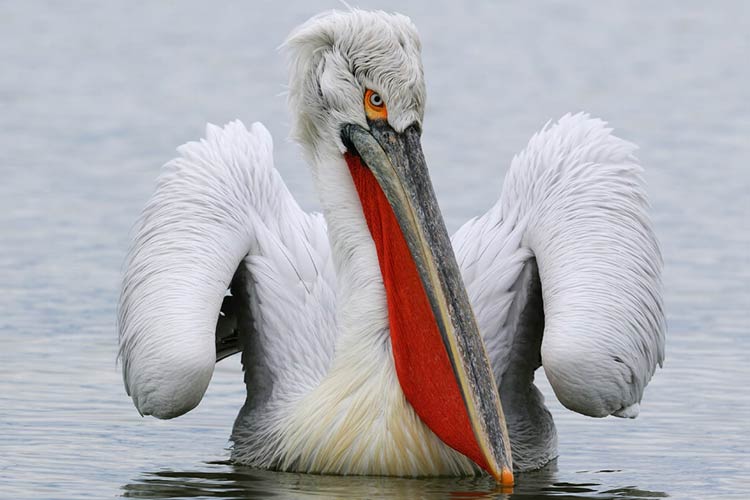
Reproduction and Breeding
The Dalmatian pelican (Pelecanus crispus) is a social species that breeds in colonies, often consisting of several hundred pairs. The pelican nests on the ground or in trees, often near water, and the female lays a clutch of two to three eggs, which are incubated by both parents.
The Dalmatian pelican breeds in the spring and early summer, depending on the specific location and climate. During the breeding season, the pelican becomes more territorial and may engage in courtship displays, such as displaying its wings and bill. The female lays a clutch of two to three eggs, which are incubated by both parents for around a month.
Once the chicks hatch, they are fed regurgitated food by the adults. The chicks are altricial, meaning that they are born blind and without feathers, and they depend on their parents for care and protection. The chicks fledge, or develop their feathers and become capable of flight, at around two to three months of age.
The Dalmatian pelican is an impressive and striking species that is well-known for its size and distinctive appearance. It is a social species that breeds in colonies and is highly adapted to living in a variety of freshwater habitats.

Population
The Dalmatian pelican (Pelecanus crispus) is a widespread species that is found in parts of Europe, Asia, and Africa. The overall population of Dalmatian pelicans is believed to be relatively stable, but there are some regional differences in population size and trends.
In Europe, the Dalmatian pelican is listed as a species of “Least Concern” by the International Union for Conservation of Nature (IUCN). The population in Europe is believed to be relatively stable, although some local populations may be declining due to habitat loss and other threats.
In Asia, the Dalmatian pelican is also listed as a species of “Least Concern” by the IUCN. The population in Asia is believed to be relatively stable, although there are some regional differences in population size and trends.
In Africa, the Dalmatian pelican is found in northern and central parts of the continent, and it is listed as a species of “Least Concern” by the IUCN. The population in Africa is believed to be relatively stable, although there are some regional differences in population size and trends.
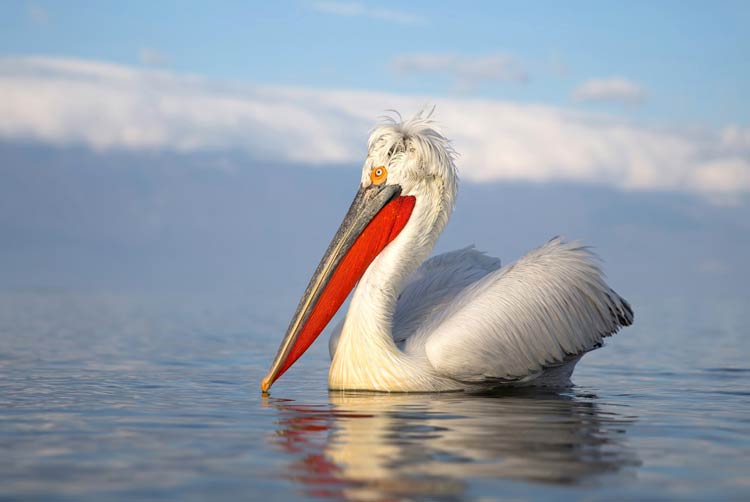
Threats and Conservation
The Dalmatian pelican (Pelecanus crispus) is a widespread and adaptable species that is found in parts of Europe, Asia, and Africa. While the overall population of Dalmatian pelicans is believed to be relatively stable, there are some threats that may impact the species.
Some of the potential threats to the Dalmatian pelican include:
- Habitat loss
The Dalmatian pelican relies on freshwater habitats such as lakes, marshes, and rivers for breeding, feeding, and roosting. Habitat loss and degradation due to human activities, such as development, agriculture, and pollution, can impact the availability of suitable habitats for the pelican. - Human disturbance
The Dalmatian pelican is sensitive to human disturbance, especially during the breeding season. Human activities such as boating, fishing, and hunting can disrupt the pelican’s breeding and feeding habits and may cause it to abandon its nest or territory. - Pollution
Pollution of freshwater habitats can impact the availability of prey for the Dalmatian pelican and may also have negative impacts on its health. - Predation
The Dalmatian pelican is vulnerable to predation by a variety of predators, including mammals, birds of prey, and reptiles.
It is important to ensure that the populations of Dalmatian pelicans are protected and that their habitats are preserved in order to safeguard the species and maintain healthy and stable populations.
Conservation efforts are important to ensure that the populations of Dalmatian pelicans are protected and that their habitats are preserved. This will help to maintain healthy and stable populations of this striking and impressive species.
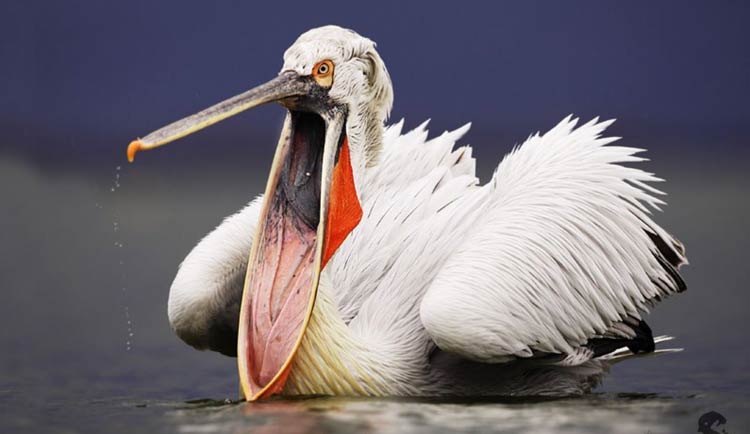
Size
Dalmatian pelican (Pelecanus crispus)
The Dalmatian pelican (Pelecanus crispus) is a large waterbird with a wingspan of up to 3.3 meters (11 feet) and a body length of up to 1.6 meters (5.2 feet). These dimensions are commonly measured in metric units, and I can provide conversions to Imperial units in parentheses for your reference. However, it is important to note that the exact size of the pelican can vary depending on the individual and the region in which it is found.
- Total height: Around 1.6 meters (5.2 feet)
- Length: 160 to 183 cm (5 ft 3 in to 6 ft 0 in)
- Wingspan: 245 to 351 cm (8 ft 0 in to 11 ft 6 in)
- Weight:
- Males: Typically between 11 to 15 kilograms (24 to 33 pounds)
- Females: Generally slightly smaller, with a weight range of 8 to 11 kilograms (18 to 24 pounds)
- Lifespan:
- In the wild, Dalmatian pelicans can live up to 15 years
- In captivity, they may live longer
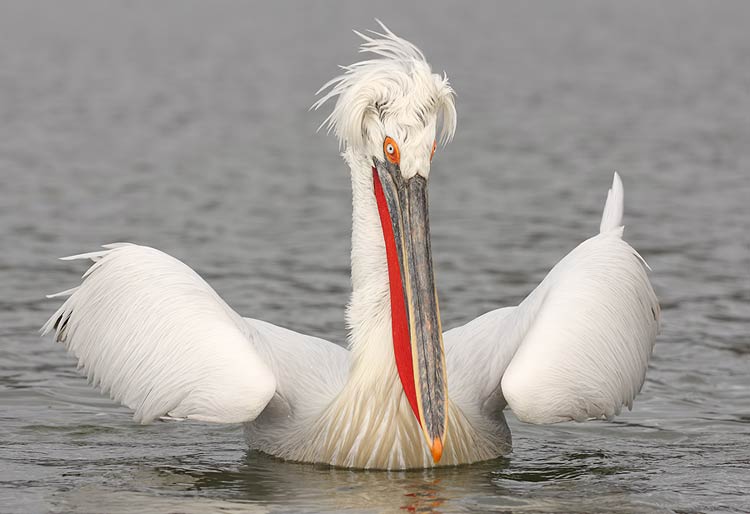
In culture
The Dalmatian pelican (Pelecanus crispus) is a striking and impressive species that has inspired a variety of cultural references and associations. Here are a few examples of how the Dalmatian pelican has been depicted in culture:
- Literature and art
The Dalmatian pelican has appeared in literature and art throughout history, often depicted as a symbol of strength, grace, and endurance. - Mythology and folklore
The Dalmatian pelican has been mentioned in various mythological and folklore traditions, often associated with themes of transformation and renewal. In some cultures, the pelican was believed to have the ability to restore its own life by tearing its own flesh and using its own blood to revive its young. - Religion
In some religions, the pelican has been seen as a symbol of self-sacrifice and compassion. In Christianity, for example, the pelican is sometimes depicted as a symbol of Christ’s sacrifice for humanity. - Popular culture
The Dalmatian pelican has also appeared in various forms of popular culture, including literature, film, television, and music. In the popular children’s book “The Very Hungry Caterpillar,” the pelican is depicted as a character who eats the titular caterpillar.
The Dalmatian pelican has a long and varied cultural history and has inspired a range of associations and references in literature, art, mythology, folklore, religion, and popular culture.

Interesting facts
- The Dalmatian pelican is the largest member of the pelican family and is known for its impressive size and distinctive appearance. It has a wingspan of up to 3.5 meters (11 feet and 6 in) and a body length of up to 1.8 meters (6 feet).
- The Dalmatian pelican is named for the distinctive white spots on its wings, which are most prominent during the breeding season. These spots are thought to help the pelican communicate with other members of its species and may also serve as a way to attract a mate.
- The Dalmatian pelican feeds on a variety of aquatic prey, including fish, crustaceans, and amphibians. It uses its large, triangular bill and expandable pouch to scoop up prey and store it for later consumption.
- The Dalmatian pelican is a social species and often feeds and roosts in large groups. During the breeding season, it nests in colonies on the ground or in trees, often near water. The female lays a clutch of two to three eggs, which are incubated by both parents.
- The Dalmatian pelican is a migratory species, and its distribution and habitat use can vary depending on the season. Some populations of Dalmatian pelicans in Europe and Asia are known to undertake long-distance migrations, traveling between breeding and non-breeding areas.
- Overall, the Dalmatian pelican is a striking and impressive species that is well-known for its size and distinctive appearance. It is an important part of the ecosystems in which it is found and plays a key role in the food web as a predator and prey species.
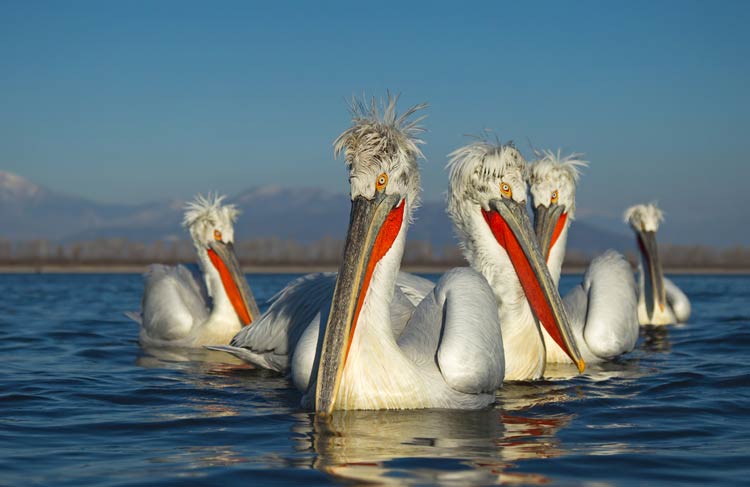
Q&A
Q: How do Dalmatian pelicans communicate within their colonies?
A: Dalmatian pelicans communicate through various vocalizations, including grunts and growls, to establish territory and coordinate group activities.
Q: What role do Dalmatian pelicans play in their ecosystems?
A: Dalmatian pelicans are apex predators, helping control fish populations. Their nesting activities contribute to nutrient cycling in wetland ecosystems.
Q: How do Dalmatian pelicans cope with changing water levels?
A: Dalmatian pelicans are adaptable and may change nesting locations or alter their feeding habits in response to fluctuations in water levels.
Q: Are Dalmatian pelicans known for any unique courtship rituals?
A: Yes, during the breeding season, Dalmatian pelicans engage in elaborate courtship displays, involving synchronized movements, vocalizations, and ritualized behaviors.
Q: What threats do Dalmatian pelicans face during migration?
A: During migration, Dalmatian pelicans may face challenges such as habitat loss, human disturbance, and collisions with power lines, posing risks to their populations.
Q: How long do Dalmatian pelican chicks depend on parental care?
A: Dalmatian pelican chicks depend on parental care for about two to three months, during which they are fed regurgitated food until they fledge and become independent.
Q: How do Dalmatian pelicans protect their nests from potential threats?
A: Dalmatian pelicans exhibit cooperative nest defense, with adults working together to deter predators and protect their eggs and chicks from potential threats.
Q: What is the typical size of a Dalmatian pelican breeding colony?
A: Dalmatian pelican breeding colonies can vary in size, ranging from a few pairs to several hundred pairs, depending on the availability of suitable nesting sites and food resources.
Q: Do Dalmatian pelicans have any cultural significance in local communities?
A: In some cultures, Dalmatian pelicans are revered symbols, representing traits like grace, resilience, and communal harmony. They may feature in local folklore and traditions.
Q: How do Dalmatian pelicans cope with winter conditions in their non-breeding areas?
A: Dalmatian pelicans often migrate to warmer regions during the winter, where they can find open water and ample food, allowing them to endure colder conditions.

Recommended
- African lion
- Asian lion
- African elephant
- African forest elephant
- Asian elephant
- Moose
- Owls
- Parrots
- Giraffe
- Gorillas
- Zebroid
- Zebra
- Giant anteater
- Lizards
- Toucans
- Lemurs
- Secretarybird
- Ants

